 Eastern Mojave Vegetation
Eastern Mojave Vegetation
Tom Schweich
 Eastern Mojave Vegetation
Eastern Mojave Vegetation
| Cedar Canyon Road - Mojave National Preserve |
|
Tom Schweich |

|
(No Preface) | ||||
|
|
Mojave RoadThis plaque, and the road behind it, are portions of the historic Mojave Road. | ||||
|
Literature Cited:
|
|||||
|
Other articles:
|
Junction:
| ||||
|
Locations: Leppy Water (Tank). |
Leppy Water (Tank). | ||||
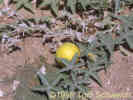 Curcurbita palmata along Cedar Canyon Road. Curcurbita palmata along Cedar Canyon Road.
|
Coyote Melon (Curcurbita palmata) along Cedar Canyon Road. This photograph was taken in September 1998, after a very wet summer. | ||||
 Rattlesnake on Cedar Canyon Road. Rattlesnake on Cedar Canyon Road.
|
Rattlesnake along the lower portion of Cedar Canyon Road. This photograph was taken in April, 1999, and this snake was very aggressive, opposite of the snake seen below. | ||||
|
Literature Cited:
Other articles:
|
Junction: Road to Thomas Place, Death Valley Mine, and Cima.
Thompson's (1921) route between Cima and Fenner follows this road past the Death Valley Mine. | ||||
|
Other articles:
|
Road descends into Cedar Canyon. | ||||
|
Literature Cited:
Other articles:
|
| ||||
|
Literature Cited:
|
|||||
|
Other articles:
Locations:
Cedar Canyon.
|
View west into Cedar Canyon. | ||||
|
Other articles:
|
Burned Joshua tree in Cedar Canyon. | ||||
|
Other articles:
|
Junction: Black Canyon Road, west into Kelso Valley to Kelso-Cima Road, or east past Rock Springs into Lanfair Valley. | ||||
|
Other articles:
|
Small road leads a short way inyo a canyon. To the northeast is a plateau.
| ||||
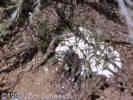 Unknown fungi on telephone road in Cedar Canyon. Unknown fungi on telephone road in Cedar Canyon.
|
Undetermined fungi along telephone road in Cedar Canyon, near west end of Pinto Mountain. | ||||
|
Other articles:
|
The south face of Pinto Mountain as seen from Cedar Canyon road. This photo was taken after the Hackberry Complex Fire. | ||||
|
Other articles:
Locations:
Cedar Canyon.
|
Cedar Canyon and the road as seen from the south face of Pinto Mountain. | ||||
|
Locations:
Cedar Canyon.
|
|||||
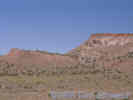 Peach Springs Tuff, Winkler Formation, and Wild Horse Mesa Tuff on the south side of Pinto Mountain. Peach Springs Tuff, Winkler Formation, and Wild Horse Mesa Tuff on the south side of Pinto Mountain.
|
View of Winkler Formation on the south side of Pinto Mountain. The lower unit on the left is Peach Springs Tuff. The middle unit, just right of center, is Winkler Formation. The volcanic unit in the upper right is Wild Horse Mesa Tuff. | ||||
|
Other articles:
Locations:
Cedar Canyon.
|
View of an outcrop of the Winkler Formation on the south side of Pinto Mountain, with Cedar Canyon in the background. The dark ledge in the lower right corner of the photograph is the top of the Winkler Formation. The Winkler Formation also crops out as the light-colored rocks in the middle distance. The rocks above the Winkler Formation are the Hole-in-the-Wall Tuff. | ||||
|
Other articles:
|
Another view of the same outcrop. The Winkler Formation is seen in the lower left. The Hole-in-the-Wall Tuff is above.
A few stakes marking location of some Frasera albomarginata can be seen in the lower right corner. | ||||
 Two burros (Equus assinus) along Cedar Canyon Road Two burros (Equus assinus) along Cedar Canyon Road
|
Two burros (Equus assinus) along Cedar Canyon Road, under a Utah Juniper (Juniperus osteosperma). Round Valley is in the background. | ||||
|
Other articles:
Locations:
Pinto Mountain.
|
Pinto Mountain | ||||
|
Other articles:
|
| ||||
 Barrel Cactus (Ferocactus cylindracus) at the base of the south side of Pinto Mountain. Barrel Cactus (Ferocactus cylindracus) at the base of the south side of Pinto Mountain.
|
A large Barrel Cactus (Ferocactus cylindracus) at the base of Pinto Mountain. | ||||
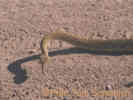 Rattlesnake on Cedar Canyon Road. Rattlesnake on Cedar Canyon Road.
|
Rattlesnake on Cedar Canyon Road. | ||||
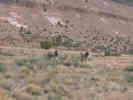 Two more burros seen along Cedar Canyon Road. Two more burros seen along Cedar Canyon Road.
|
Two burros along Cedar Canyon Road. The burro on the right seemed like it wanted to approach us, as it would walk several steps toward us, then stop and back away. | ||||
|
Other articles:
Locations:
Government Holes.
|
Government Holes
| ||||
|
Locations:
New York Mountains.
|
|||||
|
Locations: Rock Spring. |
Rock SpringAt Rock Spring is the Rock House, Fort Rock Spring, Camp Rock Spring, and Rock Spring itself. | ||||
|
Locations:
Rock Spring.
|
Rock HouseThe "Rock House," occupied for a time by Carl Faber, who is now a well-known desert artist. | ||||
|
Other articles:
|
Camp Rock Spring (Fort Rock Spring) | ||||
|
Other articles:
Locations:
Watson Wash.
|
Rock Spring (itself)
| ||||
|
Literature Cited:
|
The Red-spotted toad (Bufo punctatus) is found at Rock Spring. Confined to the deserts of the southwestern United States and northern Mexico, the red-spotted toad is less than 3 inches long and has small, squat, vermilion-tipped warts (Jaeger, 1965). Spawning occurred the last week in April, 1996, when this picture was taken. | ||||
|
Other articles:
Locations: Watson Wash. |
Junction: Pinto Valley Road
This road joins Cedar Canyon Road in Watson Wash. Take this road, not the next one. There is another road on the east side of Watson Wash that heads north toward the New York Mountains. I've never taken it, but have heard that it is little used, and difficult in spots. | ||||
|
Other articles:
|
Junction: Caruthers Canyon Road.
Theory would have it that you could take this road to Caruthers Canyon. I've never done it and therefore cannot give you an assessment of the road. When destined for the New York Mountains, I usually take Pinto Valley Road, from near Rock Spring, or take New York Mountain Road from Ivanpah Road. | ||||
|
Literature Cited:
Other articles:
Locations: Lanfair. |
Lanfair
| ||||
| If you have a question or a comment you may write to me at: tomas@schweich.com I sometimes post interesting questions in my FAQ, but I never disclose your full name or address. |
Date and time this article was prepared: 3/23/2025 5:54:03 PM |